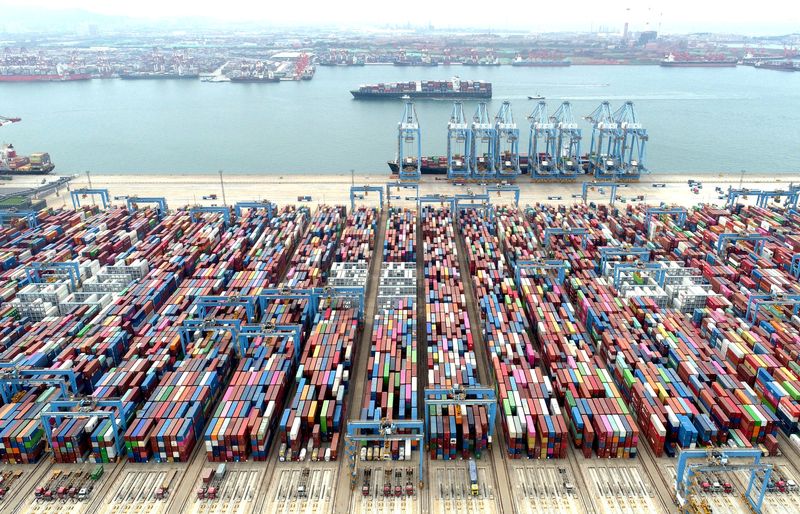By Jamie McGeever
(Reuters) - A look at the day ahead in Asian markets from Jamie McGeever.
Major economic data from China and Japan, and a central bank rate decision from the Philippines could be the main regional drivers for Asian markets this week, with investors growing increasingly nervous about the U.S. and global macro outlook.
World stocks ended last week on a shaky footing as worries about the U.S. debt ceiling, credit conditions and the cumulative effect of 500 basis points of Fed rate hikes overshadowed surprisingly strong U.S. earnings.
These were some of the issues discussed at the three-day meeting of G7 finance leaders that concluded on Saturday.
The MSCI World index fell 0.5% - not a big deal, perhaps, but the second weekly decline in a row and the steepest since the U.S. banking crisis blow-up two months ago.
Asian shares ex-Japan, however, inched up for a second weekly rise in a row, also something not seen since early March.
If U.S. tech stocks are flying - the Nasdaq rose for a third week and Wall Street's rally this year is entirely thanks to AI-centric stocks, according to SocGen - Asian tech is stuck in quicksand.
The Hang Seng tech index fell last week for a sixth straight week, its longest losing streak since mid-2015 when the first tremors of the Chinese stock market earthquake were felt and only weeks before Beijing devalued the yuan.
The latest Chinese economic indicators have been shocking. Inflation and imports collapsed in April, casting severe doubt over the strength of the economy's post-lockdown recovery and ramping up expectations of more policy easing.
Industrial production, retail sales and fixed asset investment data for April this week will paint a fuller picture. More sub-par numbers will likely increase the selling pressure on Chinese stocks - the Shanghai composite had its worst week since March, while the blue chip index fell for a fifth week and also had its biggest weekly fall in two months.
Japan's first-quarter GDP figures will be released on Wednesday, and perhaps more importantly, the latest inflation numbers are out on Friday.
Core inflation is far higher than the Bank of Japan would like and is expected to have re-accelerated to 3.4% in April. Although new BOJ Governor Kazuo Ueda insists he will go slow on reversing the bank's super-loose policy, some analysts expect the BOJ to abandon yield curve control this summer.
Investors with exposure to Thailand are waiting to see how election results could shift the balance of power and first-quarter GDP figures will be released on Monday, the same day the Philippines central bank is expected to keep interest rates on hold at 6.25%.
Here are three key developments that could provide more direction to markets on Monday:
- Thailand GDP (Q1)

- India WPI inflation (April)
- Japan corporate goods price inflation (April)
(By Jamie McGeever; Editing by Lisa Shumaker)